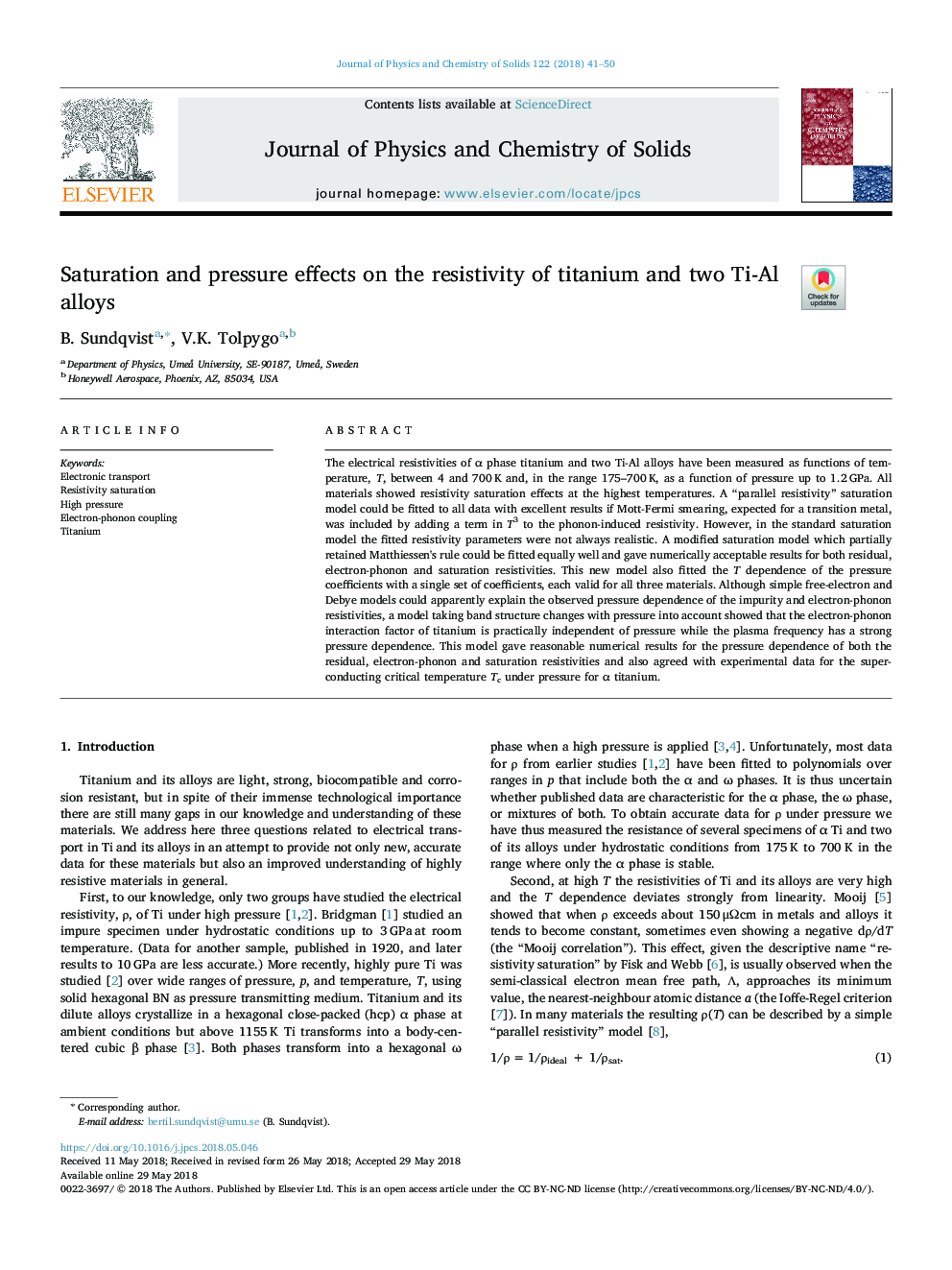| Article ID | Journal | Published Year | Pages | File Type |
|---|---|---|---|---|
| 7919823 | Journal of Physics and Chemistry of Solids | 2018 | 10 Pages |
Abstract
The electrical resistivities of α phase titanium and two Ti-Al alloys have been measured as functions of temperature, T, between 4 and 700â¯K and, in the range 175-700â¯K, as a function of pressure up to 1.2â¯GPa. All materials showed resistivity saturation effects at the highest temperatures. A “parallel resistivity” saturation model could be fitted to all data with excellent results if Mott-Fermi smearing, expected for a transition metal, was included by adding a term in T3 to the phonon-induced resistivity. However, in the standard saturation model the fitted resistivity parameters were not always realistic. A modified saturation model which partially retained Matthiessen's rule could be fitted equally well and gave numerically acceptable results for both residual, electron-phonon and saturation resistivities. This new model also fitted the T dependence of the pressure coefficients with a single set of coefficients, each valid for all three materials. Although simple free-electron and Debye models could apparently explain the observed pressure dependence of the impurity and electron-phonon resistivities, a model taking band structure changes with pressure into account showed that the electron-phonon interaction factor of titanium is practically independent of pressure while the plasma frequency has a strong pressure dependence. This model gave reasonable numerical results for the pressure dependence of both the residual, electron-phonon and saturation resistivities and also agreed with experimental data for the superconducting critical temperature Tc under pressure for α titanium.
Related Topics
Physical Sciences and Engineering
Materials Science
Electronic, Optical and Magnetic Materials
Authors
B. Sundqvist, V.K. Tolpygo,
